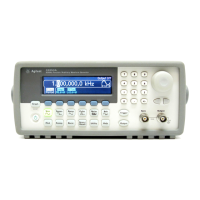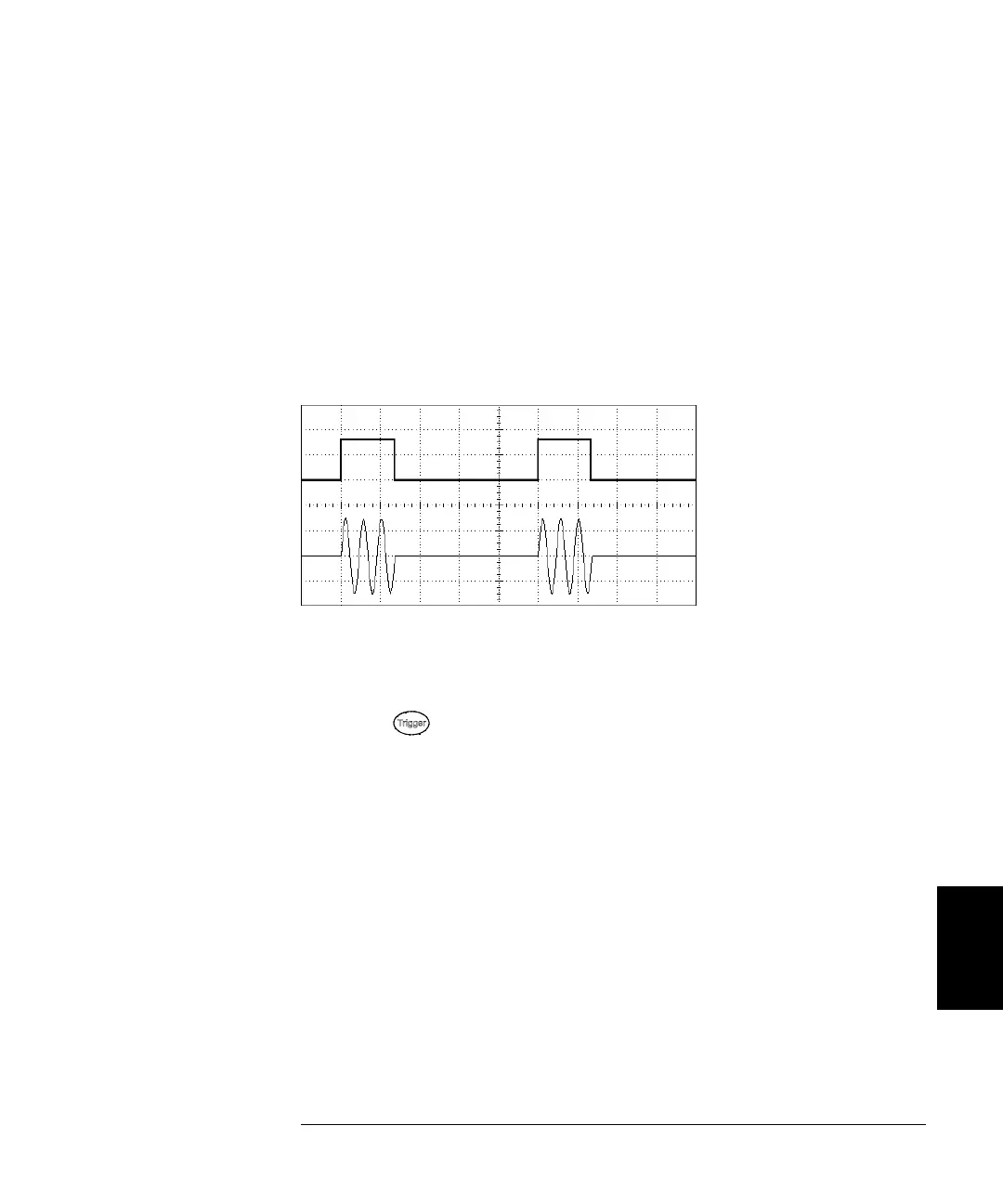315
Chapter 7 Tutorial
Burst
4
7
Burst
You can configure the function generator to output a waveform with a
specified number of cycles, called a burst. You can use burst in one of
two modes: N-Cycle Burst (also called “triggered burst”) or Gated Burst.
N-Cycle Burst An N-Cycle burst consists of a specific number of
waveform cycles (1 to 1,000,000) and is always initiated by a trigger
event. You can also set the burst count to “Infinite” which results in a
continuous waveform once the function generator is triggered.
Three-Cycle Burst Waveform
For bursts, the trigger source can be an external signal, an internal
timer, the key, or a command received from the remote interface.
The input for external trigger signals is the rear-panel Trig In connector.
This connector accepts TTL-compatible levels and is referenced to chassis
ground (not floating ground). When not used as an input, the Trig In
connector can be configured as an output to enable the 33250A
to trigger
other instruments at the same time as its internal trigger occurs
.
The effect of a trigger can be delayed up to 85 seconds (in increments of
100 picoseconds) to synchronize the start of the burst with other events.
You can also insert a trigger delay to compensate for the cable delays and
response times of other instruments in your system.
An N-Cycle burst always begins and ends at the same point in the
waveform, called the start phase. A starting phase of 0° corresponds to
the beginning of the waveform record and 360° corresponds to the end
of the waveform record.
Sync Output
Main Output

